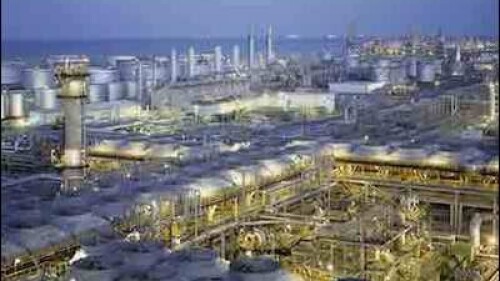In recent years, U.S. crude oil production has neared an all-time high. |
There is no lack of voices warning against the dangerous implications of the nuclear agreement the Obama Administration is advancing with Iran. The opposition has mostly focused on the destabilizing geopolitical impact of a nuclear Iran and what it means for the security of the U.S. and its allies. But there is one less obvious casualty – the North American oil and gas industry.
Undoubtedly in the event of lifting of the sanctions, cash-starved Iran would do all in its power to quickly ramp up its oil exports to make up for lost revenues, and the oil market could face an injection of 500,000-800,000 barrels/day of Iranian crude. At a time when U.S. crude oil supplies are already at their highest level in more than 80 years and storage facilities are reaching their maximum capacity, an influx of Iranian oil could easily slice current oil prices by half. This would be a crippling blow to America’s oil and gas industry, effectively marking the end of the North American energy renaissance.
Even before Iran opens the floodgate the industry finds itself in a precarious situation. To cover their capital investment and operational costs, North American oil drillers have collectively borrowed in recent years about half a trillion dollars. This debt was secured from financial institutions on the premise that the oil would be sold for $100 a barrel or so. But at $50 a barrel the revenues are out of tune with expectations. To avoid bankruptcy, oil companies are forced to pump as much oil as they can to generate sufficient cash flow in order to service their debt. But such Red Queen practice cannot go on for much longer.
Hence, many projects have been shelved or streamlined; U.S. rig count, a key barometer of drilling activity, has been declining for the past six months; oil services companies have announced 40,000 layoffs to cope with lower oil prices; and independent oil and gas companies, particularly those with high production costs, are facing defaults and bankruptcies.
The slide in oil prices also impacts the natural gas market. The North American shale revolution has unleashed huge amounts of natural gas but, due to lack of infrastructure to export the gas to international markets, America’s gas is under-demanded and oil companies holding large amounts of gas in their portfolios are losing their shirts on this commodity as well. So far, the industry has put its faith on the construction of several multi-billion dollar LNG terminals from where the gas could be shipped to Europe and Asia. And indeed five such projects have been approved for construction by the Federal Energy Regulatory Commission (FERC).
But a few of these projects could be derailed if the Iranian oil tsunami occurs. LNG prices in Asia are indexed to oil. This means that low oil prices drag down LNG prices - the spot price of LNG in Japan is at its lowest level in five years despite the fact that the country’s fifty nuclear reactors are still idle - making America’s LNG less competitive in the Asian market compared to Australian or Qatari gas. Developers of LNG liquefaction facilities in the U.S. who for years struggled to obtain export permits will soon realize that their revenue projections and debt structure may no longer be viable under the low price scenario.
If there is any salvation for the industry, it is in the creation of a new market for its product. This can be done in the sector in which it already has a big stake – transportation. Indeed this is the only sector that can gobble an amount of domestic natural gas significant enough to recover the depressed natural gas market.
Unlike other industries, oil and gas producers have never been challenged to create demand for their product. |
A barrel of oil has roughly six times the energy content of a million Btu of natural gas. At current oil prices, gas is almost three times cheaper than oil on an energy equivalent basis. This means there is enough room for oil prices to come down without crowding out gas from the transportation fuel market.
But to generate demand for natural gas in transportation, cars, trucks and ships must be opened to fuels derived from the commodity, like methanol, ethanol, compressed natural gas and electricity. For this to happen automakers should be offered an option to reduce their fuel economy obligation – an unachievable 54.5 miles per gallon by 2025, twice the current efficiency level – if they open most of their cars to some sort of fuel competition, whether through flex fuel engines, electric motors, natural gas engines, fuel cells etc. The abundance of choice enabling vehicles would give rise to greater demand for natural gas and this would pad the balance sheets of America’s energy companies and keep them viable until the oil market rebalances itself. It will also provide consumers with lasting protection against future oil price hikes.
Unlike other industries that are used to investing a great deal of resources in creating demand for their product, oil and gas producers have never been challenged to seek new sources of demand. It has always been there for them. But the new market conditions beg for a new industry mindset – one that views fuel choice not as dangerous competition but rather as a lifeline in what could be a protracted and challenging period.
Gal Luft is Co-director of the Institute for the Analysis of Global Security, a Senior Adviser to the United States Energy Security Council, and a fellow at the Middle East Forum. He is also co-chairman of the Global Forum on Energy Security.








